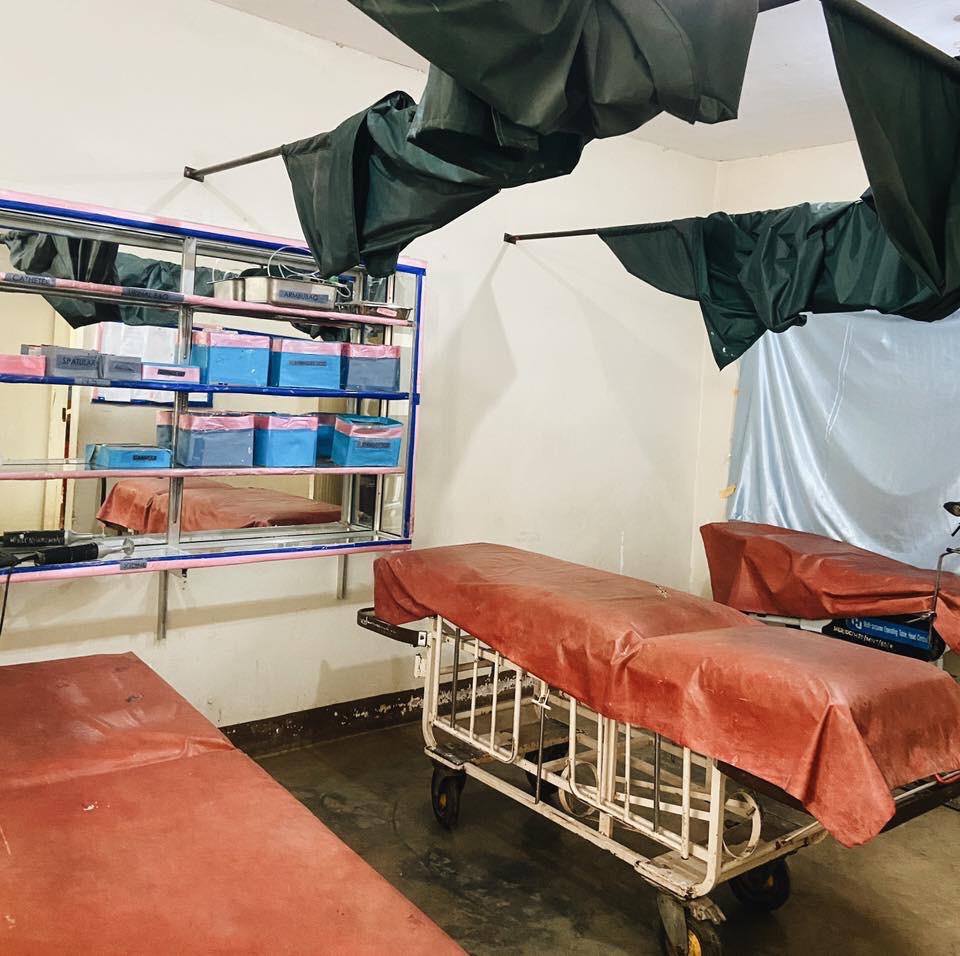Case #2: An 8-Year-Old Boy Unconscious After Road Trauma

This is the Minor Theatre. This is a place where patients are sent for minor procedures such as laceration repair (getting stitches for a cut), casting of broken bones, removal of casts, dressing changes for chronic wounds, incisions of abscesses, occasionally gynecologic stuff. Pretty light, patients are generally not suffering from life-threatening problems, they show up and then go home with their families, and treatments are relatively affordable, so it’s a cheerful place and all the staff feel pretty confident in their ability to do some good. This is the department that is most like the ERs that I am used to: plenty of joking around and less hierarchical relationships, more equality among doctors, nurses, and the physical therapists that do a lot of the orthopedic work.
One morning, I arrived here planning to spend my day as described above, but the Minor Theatre had been transformed into what I recognized as a code room. There was a young boy on the table (later we surmised that he was 8), who had been struck by a Coca Cola truck while crossing the road on his way to school. His uniform had been cut off (or more likely torn, since scissors are so difficult to come by at Tengeru), and he was intubated and undergoing CPR. Apparently he had arrived with a pulse of 40-50 (very abnormally low for any child, but certainly one with life-threatening injuries) and a GCS (Glasgow Coma Scale, ranges from 3-15 and predictive of severe brain injury) of 3. Pretty much every doctor on campus was present, and the Minor Theatre nurses were working like a well-oiled machine. The Medical Director of the hospital was running the code, and pretty much everyone else was silent and doing their jobs. The one thing that was conspicuously absent from this otherwise full-scale resuscitation was any sort of cardiac monitor. The only monitoring that was being done was a pulse oximeter on the child’s toe. It was registering in the 30s-40s.
I tried to fall in with the troops and ended up doing chest compressions to free up others who were familiar with institutional expectations and knew where to find stuff. I racked my brain trying to come up with something I could add to this child’s care, but mostly bit my tongue as I recalled the minimal survivability of cardiac arrest in the setting of blunt trauma. Soon, futility was apparent to all and the team stopped the resuscitation.
That’s when things got really interesting: the medical director gave an immediate debriefing to the staff on how the code had run and what they could do better next time. That is also standard practice in the US, but here it was a very formal affair, delivered with sternness, love, and an impressive measure of leadership. The endotracheal (breathing) tube was carefully removed and placed in a bucket filled with a chlorine solution so that it could be reused. Here I was, worrying that the coroner would want it left in place for legal reasons, but in fact the main priority was management of a scarce resource. The very large scalp laceration, overlying a skull fracture through which brain was clearly visible, was meticulously repaired for the cosmetic comfort of the boy’s family. He was then wrapped in a sheet awaiting their arrival. There would be no coroner, no police report. Representatives from Coca Cola rushed in, not to cover their legal liability, but to apologize to the family and see what they could do to help.
I apologize for the two-in-a-row dire cases about 8-year old boys. I have one of those, too, in Nelson, and I would always hope for the best medical care possible for him. Thanks for following these posts, faithful readers. I realize they are not the pleasant, happy travelogues you signed up for. More of those are coming soon. In the meanwhile, if you would like to help Tengeru and patients like this, check out our GoFundMe:
